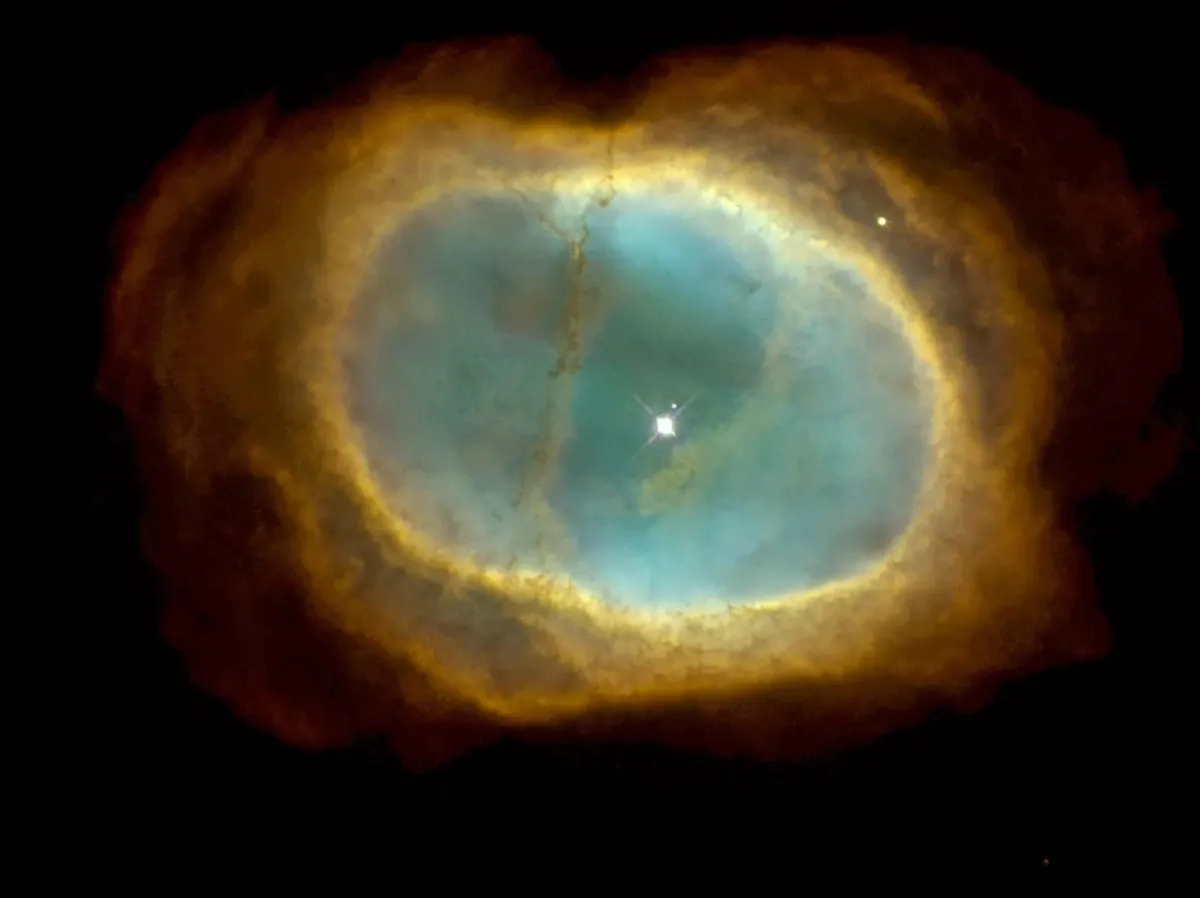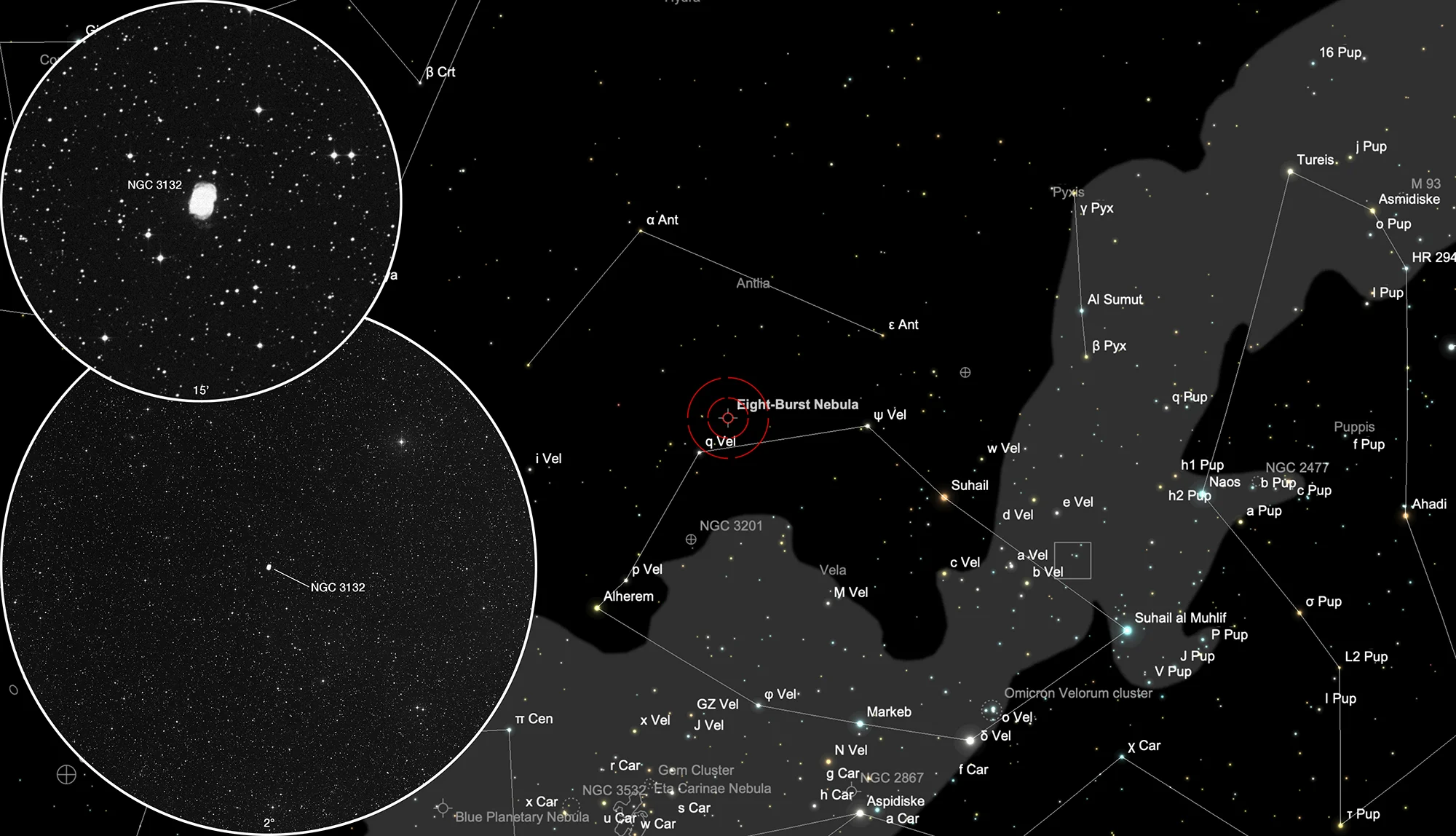Southern Ring Nebula, Eight-Burst Nebula (NGC 3132)

History
The planetary nebula NGC 3132 was discovered on 2 March 1835 by John Herschel during his survey of the southern sky at Wynberg in Cape Town, South Africa. He listed it as h 3228 and recorded four observations. Notes from his first observation: «Planetary nebula, very large, very bright, elliptic; has in it a 9th mag star somewhat excentric. Its light is exactly equable, i. e. not increasing towards the middle; yet I cannot help imagining it to be closely dotted. It is just like a star out of focus in certain states of the mirror and atmosphere. Three stars near, a = 9 m; b = 9 m; c = 14 m; A very extraordinary object.» [11]
The nickname «Eight Burst Nebula» probably originates from Shapley's and Paraskevopoulos' publication «Galactic and Extragalactic Studies, III. Photographs of Thirty Southern Nebulae and Clusters» There they wrote about NGC 3132: «A series of photographs of varying exposures would be necessary to bring out the intricate details of the bright planetary NGC 3132 = HD 87877. It could well be named the '8-burst' planetary from the number of distinct arcs on the boundary of the main disc or shell.» [733] Another common nickname is «Southern Ring Nebula» as counterpart to Messier 57 on the northern celestial hemisphere.
Physical Properties
| Designation | NGC 3132 |
| Type | PN |
| Right Ascension (J2000.0) | 10h 07m 01.8s |
| Declination (J2000.0) | -40° 26' 10" |
| Diameter | 1.47 arcmin |
| Photographic (blue) magnitude | 8.2 mag |
| Visual magnitude | 9.2 mag |
| Metric Distance | 0.865 kpc |
| Dreyer Description | !! planetary, vB, vL, lE * 9 m, 4s d |
| Identification, Remarks | h 3228; GC 2017; PK 272+12.1; ESO 316-PN27; AM 1004-401; CS=10.1, Eight-burst planetary |
Finder Chart
The planetary nebula NGC 3132 is located in the constellation Vela and not visible from central Europe. On 19 February it in opposition with the Sun and is therefore highest in the sky at local midnight.
